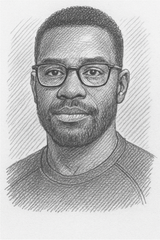Visualize Back Pain Solutions with back pain images
Explore comprehensive back pain images to understand common causes, treatment options, and proper posture techniques for effective pain management and relief

https://www.youtube.com/watch?v=pIgcp3_ig7M
Did you know that about 80% of adults will have back pain at some point? This shows how important it is to understand back pain through pictures. Back pain images are key for both patients and doctors to talk, diagnose, and find treatments.
Low back pain is a big reason for missed work in the U.S. Our guide aims to clear up this common issue. It offers insights into its different forms and possible fixes.
Visual aids are key to getting back pain. Pictures of back pain help people spot symptoms, grasp the anatomy, and start recovering. Whether it's sudden pain from an injury or ongoing discomfort, these images are full of useful info.
Key Takeaways
- 80% of adults experience back pain during their lifetime
- Back pain is a leading cause of workplace absenteeism
- Visual representations help patients understand their condition
- Different types of back pain require specific diagnostic approaches
- Early recognition and proper visualization can aid in treatment
Understanding Common Types of Back Pain Through Visual Representation
Back pain affects millions of Americans, with up to 80% experiencing it at some point. Knowing how to show back pain can help you talk about and manage your symptoms better.
Spine pain images show the many ways pain can feel. Different back pain types look and feel unique. It's hard to describe them without pictures.
Acute vs Chronic Back Pain Symptoms
Back pain can be different for everyone. Here are some main differences:
- Acute Pain: Lasts less than six weeks, usually from muscle strain or injury
- Chronic Pain: Lasts more than three months, might mean a deeper issue
About 20% of Americans live with chronic pain, with back pain being the most common. A good core workout can help manage these symptoms.
Identifying Pain Locations and Patterns
Photos of lower back pain show pain can be in different spots:
- Lumbar region (lower back)
- Thoracic area (mid-back)
- Cervical spine (neck)
Visual Guide to Spine Anatomy
Spine pain images help patients spot problems. The human spine has:
- 33 vertebrae
- Intervertebral discs
- A complex network of muscles and nerves
With over 54 million US adults dealing with arthritis in their backs, pictures are key for diagnosis and treatment.
Comprehensive Collection of back pain images for Diagnosis
Medical imaging is key in diagnosing back pain. Over 619 million people worldwide suffered from low back pain in 2020. Doctors use advanced imaging to see spine conditions clearly.
- X-rays: Show bone structure and alignment
- CT Scans: Give detailed cross-sectional views
- MRI: Capture soft tissue and nerve root details
Illustrations help doctors spot specific back pain causes. Imaging can find the exact cause, like muscle, bone, or nerve issues.
| Imaging Technique | Primary Diagnostic Value | Best For |
|---|---|---|
| X-ray | Bone structure | Fractures, alignment issues |
| CT Scan | Detailed bone and tissue view | Complex structural problems |
| MRI | Soft tissue visualization | Disc herniation, nerve compression |
About 80% of adults will experience back pain. Knowing about these diagnostic tools is vital. Combining patient history, physical exams, and imaging helps doctors create effective treatments.
Conclusion
Back pain images give us deep insights into spinal health. Our study looked at 29 MRI image features and their link to low back pain (LBP). We found 11 features that showed a strong connection, showing the value of visual representation of back pain in medical checks.
These images tell a detailed story of how the spine works. Neurogenic images like disc herniation and extrusion were 100% linked to back pain. But, features like disc protrusion didn't show a clear link. These images help doctors understand the complex reasons behind back pain.
Preventing back pain is key. Keeping a healthy weight, exercising regularly, and paying attention to work ergonomics can help a lot. Obesity, smoking, and not being active enough are big factors in back pain. Using back pain images helps us take care of our spines better.
As imaging tech gets better, so does our understanding of back pain. The mix of genetics, how the body works, and lifestyle is complex. But, using visual diagnostics is a big help in managing back pain.
FAQ
What are the most common types of back pain images used for medical diagnosis?
Doctors use X-rays, MRI scans, CT scans, and ultrasound images to diagnose back pain. These tools help see the spine, find herniated discs, and spot bone problems. They also help understand why the pain is there.
How can back pain images help patients understand their condition?
Images let patients see where and what's wrong with their back. This makes it easier to understand the problem. It helps patients talk better with their doctors about their health.
What's the difference between acute and chronic back pain in medical imaging?
Acute pain images show recent injuries or short-term problems. Chronic pain images show long-term changes, like degenerative disc disease. They show ongoing issues or permanent spinal changes.
Can back pain images predict future health complications?
Yes, advanced imaging can spot early signs of problems. This includes signs of deterioration or structural issues. It helps catch potential serious back problems early.
How accurate are medical imaging techniques for diagnosing back pain?
Imaging is very good, but it's best with patient history and physical exams. No single test is 100% sure. But, they give doctors the info they need to plan treatment.
Are there any risks associated with back pain imaging procedures?
Some tests, like X-rays, have a little radiation. MRI and ultrasound don't. Talk to your doctor about risks and benefits.
How often should someone get back pain images?
It depends on your health, symptoms, and medical history. Doctors usually suggest imaging for new symptoms, when treatments fail, or to check ongoing conditions.
What emerging technologies are improving back pain imaging?
New tech like 3D imaging, AI diagnostics, and high-resolution digital imaging are changing back pain detection. They offer clearer, more detailed views of the spine.
👉 Join the Active Man Community
Get expert tips, workout guides, nutrition hacks, and the latest trends delivered straight to your inbox every week. No spam — just actionable insights to help you live stronger, healthier, and better.





